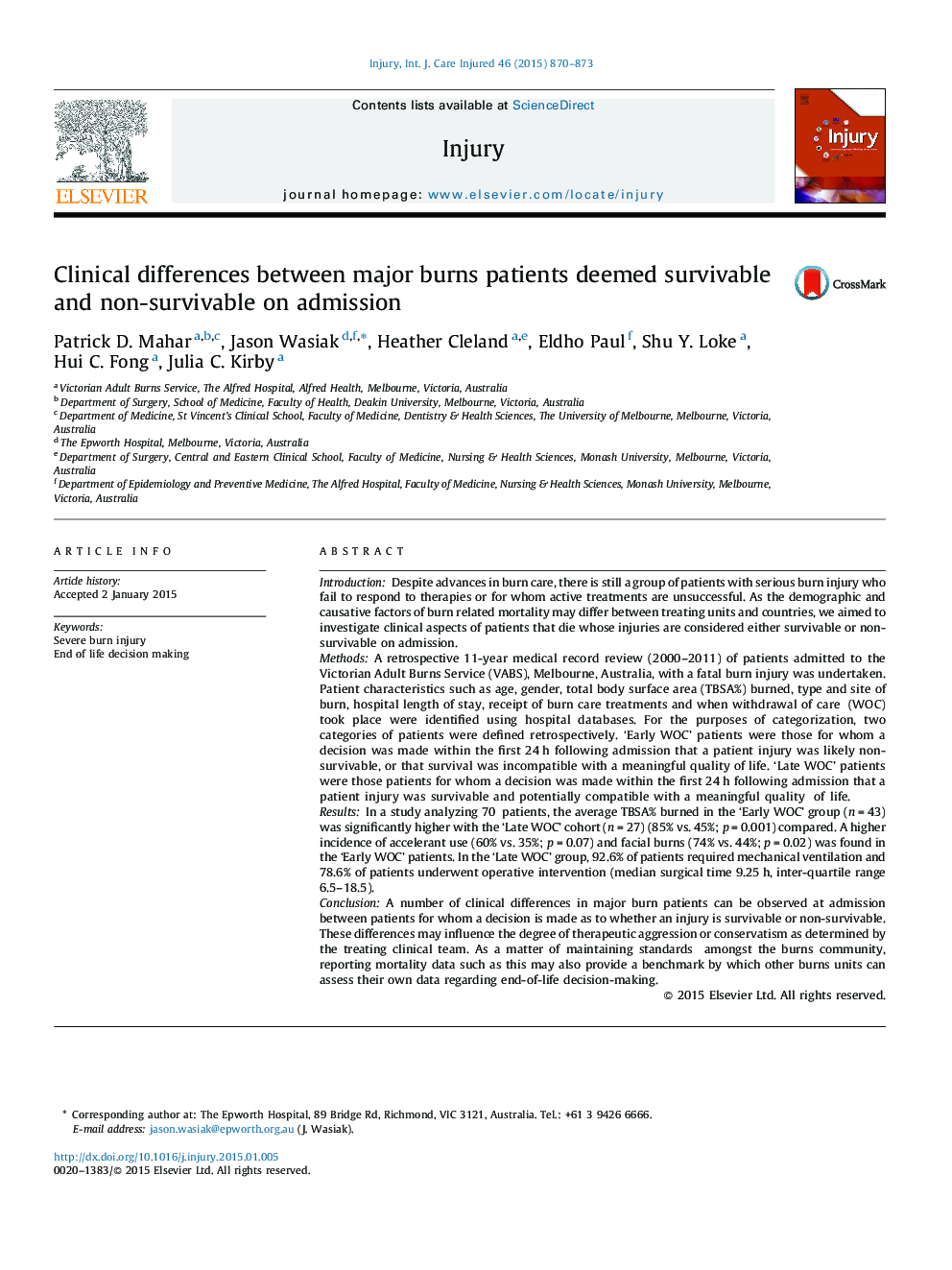| کد مقاله | کد نشریه | سال انتشار | مقاله انگلیسی | نسخه تمام متن |
|---|---|---|---|---|
| 3239331 | 1205997 | 2015 | 4 صفحه PDF | دانلود رایگان |
IntroductionDespite advances in burn care, there is still a group of patients with serious burn injury who fail to respond to therapies or for whom active treatments are unsuccessful. As the demographic and causative factors of burn related mortality may differ between treating units and countries, we aimed to investigate clinical aspects of patients that die whose injuries are considered either survivable or non-survivable on admission.MethodsA retrospective 11-year medical record review (2000–2011) of patients admitted to the Victorian Adult Burns Service (VABS), Melbourne, Australia, with a fatal burn injury was undertaken. Patient characteristics such as age, gender, total body surface area (TBSA%) burned, type and site of burn, hospital length of stay, receipt of burn care treatments and when withdrawal of care (WOC) took place were identified using hospital databases. For the purposes of categorization, two categories of patients were defined retrospectively. ‘Early WOC’ patients were those for whom a decision was made within the first 24 h following admission that a patient injury was likely non-survivable, or that survival was incompatible with a meaningful quality of life. ‘Late WOC’ patients were those patients for whom a decision was made within the first 24 h following admission that a patient injury was survivable and potentially compatible with a meaningful quality of life.ResultsIn a study analyzing 70 patients, the average TBSA% burned in the ‘Early WOC’ group (n = 43) was significantly higher with the ‘Late WOC’ cohort (n = 27) (85% vs. 45%; p = 0.001) compared. A higher incidence of accelerant use (60% vs. 35%; p = 0.07) and facial burns (74% vs. 44%; p = 0.02) was found in the ‘Early WOC’ patients. In the ‘Late WOC’ group, 92.6% of patients required mechanical ventilation and 78.6% of patients underwent operative intervention (median surgical time 9.25 h, inter-quartile range 6.5–18.5).ConclusionA number of clinical differences in major burn patients can be observed at admission between patients for whom a decision is made as to whether an injury is survivable or non-survivable. These differences may influence the degree of therapeutic aggression or conservatism as determined by the treating clinical team. As a matter of maintaining standards amongst the burns community, reporting mortality data such as this may also provide a benchmark by which other burns units can assess their own data regarding end-of-life decision-making.
Journal: Injury - Volume 46, Issue 5, May 2015, Pages 870–873
